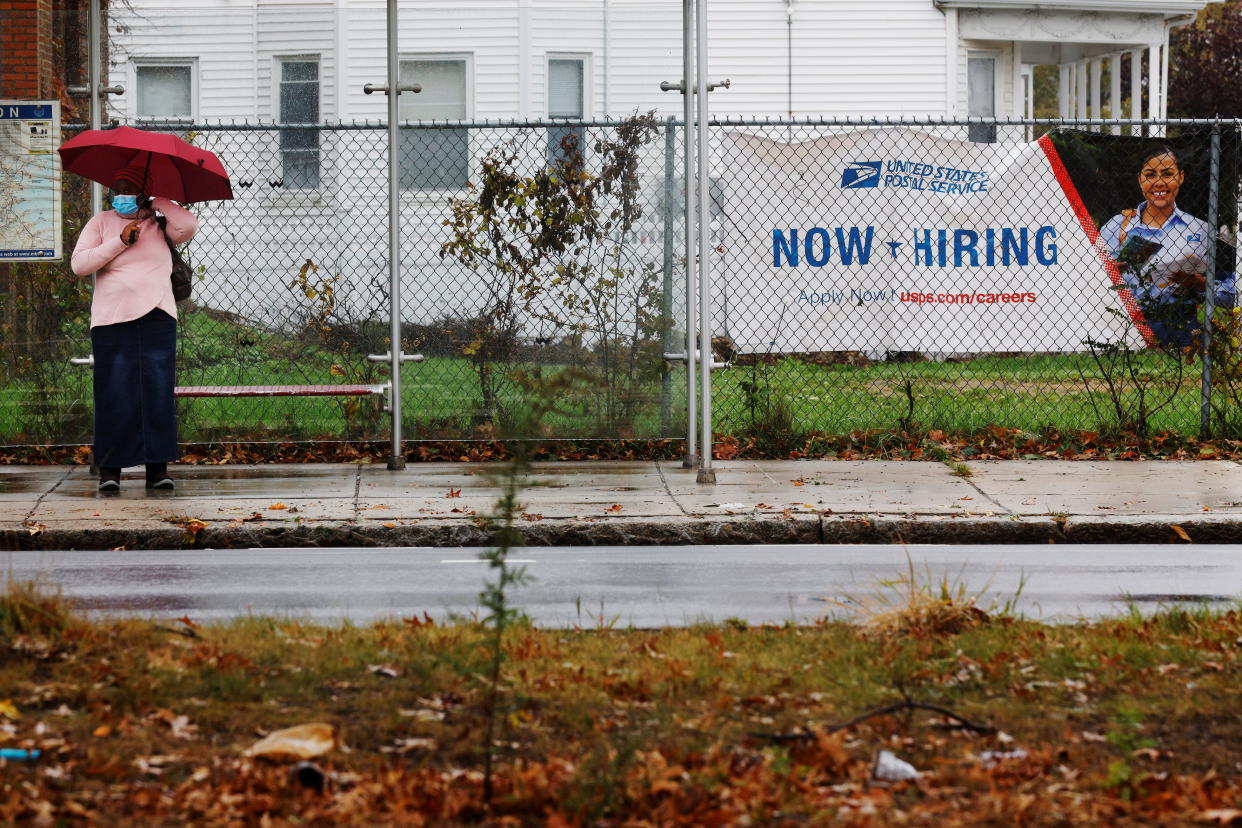October private payrolls rose by 571,000, topping expectations: ADP
U.S. private employers added back more jobs than expected last month, reflecting a pick-up in the pace of hiring as more service-focused companies brought back workers to meet elevated demand.
Private payrolls grew by 571,000 in October compared to September, ADP said in its closely watched monthly report. Consensus economists were looking for a rise of 400,000 jobs, according to Bloomberg data. The month earlier, private payrolls had risen by a downwardly revised 523,000, from the 568,000 previously reported.
The job gains were again led by a wide margin by the service-providing sector, which saw net payrolls gains of 458,000 last month. This was in turn fueled by leisure and hospitality industries, which brought back 185,000 jobs. Professional and business services, and education and health services saw gains of 88,000 and 56,000, respectively.
The goods-producing sector also saw a pick-up in hiring across all major industries. Both manufacturing and construction employers brought back more than 50,000 workers each, building on gains from September.
Wednesday's report reflected a 10th straight month of net payroll gains in the private sector, with reopenings and a drop in coronavirus infections helping drive a wave of rehiring activity throughout 2021. The service sector, which bore the brunt of the job losses at the height of the pandemic last year, has been this year's biggest rebounder. Leisure and hospitality payrolls alone brought back an average of about 190,000 jobs per month between July and September, according to ADP.
But even given the job gains seen for the year-to-date, finding enough workers to keep pace with demand has remained a critical pressure point for companies.
A number of executives have aired these concerns in third-quarter earnings reports and calls. During last week's call with analysts, Amazon (AMZN) Chief Financial Officer Brian Olsavsky said in the third quarter, "labor became our primary capacity constraint, not storage space or fulfillment capacity." And executives at consumer products companies Clorox (CLX) and Kimberly-Clark (KMB) both flagged some pressures around labor shortages and costs, to name just a few of the bevy of companies working through these scarcities.

ADP's report serves as just one measure of rehiring trends in the U.S. economy. Friday's jobs report from the Labor Department will be one of the most closely watched metrics, offering the government's "official" count of those brought back into the labor market last month. Consensus economists are looking to see non-farm payroll gains accelerate to 450,000 for October, according to Bloomberg data, rising sharply from the disappointing 194,000 payrolls brought back in September.
Still, ADP's print does not serve as a precise indicator of payroll trends seen in the government data due to differences in methodology. ADP tallies employees actively on companies' payrolls toward its headline figures, while the Labor Department only counts those paid during the survey period towards its non-farm payrolls.
"The ADP employment survey has over-predicted private payrolls in five out of the last six months," wrote Brett Ryan, senior U.S. economist for Deutsche Bank, in a note. "Thus, any upside surprise may be discounted somewhat by market participants."
The Labor Department is set to report its monthly jobs report Friday at 8:30 a.m. ET.
—
Emily McCormick is a reporter for Yahoo Finance. Follow her on Twitter: @emily_mcck

